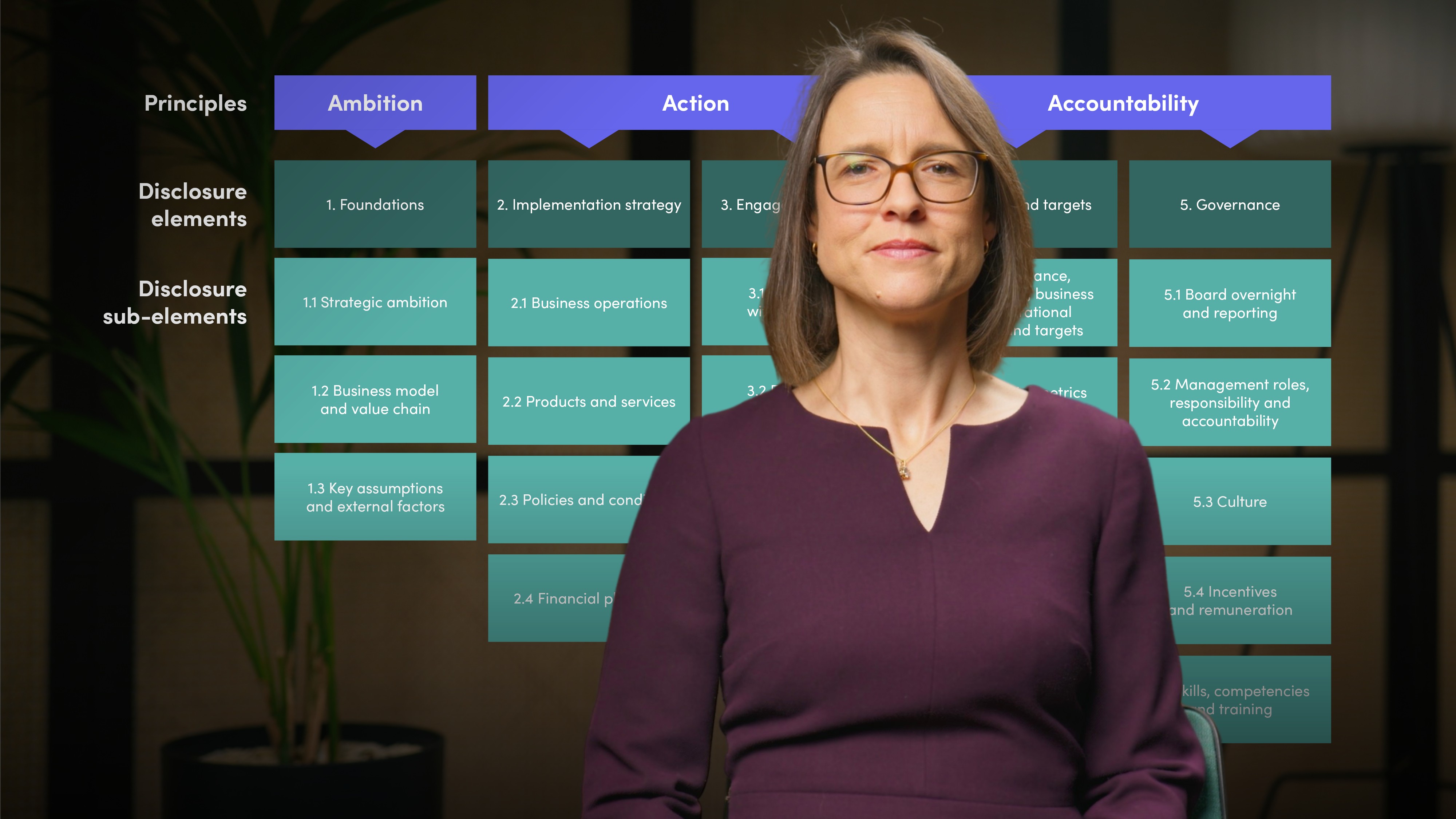
Introduction to Climate Transition Plans

Michelle Horsfield
25 years: Sustainable Finance
In this video, Michelle talks about a comprehensive exploration of corporate transition plans towards a greener economy, drawing from her expertise in supporting multinational companies. Through the lens of the Transition Plan Taskforce (TPT) framework, she unpacks the principles of Ambition, Action, and Accountability, providing invaluable insights into strategic goal-setting, implementation strategies, financial considerations, and stakeholder engagement.
In this video, Michelle talks about a comprehensive exploration of corporate transition plans towards a greener economy, drawing from her expertise in supporting multinational companies. Through the lens of the Transition Plan Taskforce (TPT) framework, she unpacks the principles of Ambition, Action, and Accountability, providing invaluable insights into strategic goal-setting, implementation strategies, financial considerations, and stakeholder engagement.
Subscribe to watch
Access this and all of the content on our platform by signing up for a 7-day free trial.

Introduction to Climate Transition Plans
13 mins 39 secs
Key learning objectives:
Understand the structure of the Transition Plan Taskforce framework
Identify the primary benefits of a climate related transition plan for businesses
Outline the three key principles of the Transition Plan Taskforce framework
Overview:
The transition to a net-zero economy by mid-century is a monumental task for companies, requiring a thorough reevaluation of operations and strategy. While commitments have been made, the focus has shifted to implementation. Teams are undergoing comprehensive reviews involving all levels of the organization, a challenging process that I have experienced firsthand. The International Financial Reporting Standards (IFRS) S2 provides a broad outline for climate transition plans, but detailed guidance is found in the Transition Plan Taskforce (TPT) framework. This framework, released in October 2023 with sector-specific guidance, offers clarity on the activities necessary for compliance with IFRS S2.
Subscribe to watch
Access this and all of the content on our platform by signing up for a 7-day free trial.
- Ambition
- Action
- Accountability
Firstly, it enhances reporting, providing investors and lenders with better information to assess risk and allocate capital- Secondly, it assists in evaluating whether a company's strategy for managing the transition aligns with its exposure to climate-related risks and opportunities
- Thirdly, it enables clients and consumers to gauge the credibility of a company's transition-related claims and holds entities accountable for their commitments
What are the key elements of setting ambition in a transition plan?
Firstly, strategic ambition involves defining the objectives and priorities of the plan- Secondly, the business model and value chain element describe the implications of the new strategy on the company's business model
- Lastly, the plan should list key assumptions and external factors, such as the chosen climate scenario, to provide clarity on future expectations
- The implementation strategy, which is the core of the plan, outlines the steps and initiatives required for the transition
- The financing aspect addresses how the transition will be funded
Subscribe to watch
Access this and all of the content on our platform by signing up for a 7-day free trial.

Michelle Horsfield
There are no available Videos from "Michelle Horsfield"





























